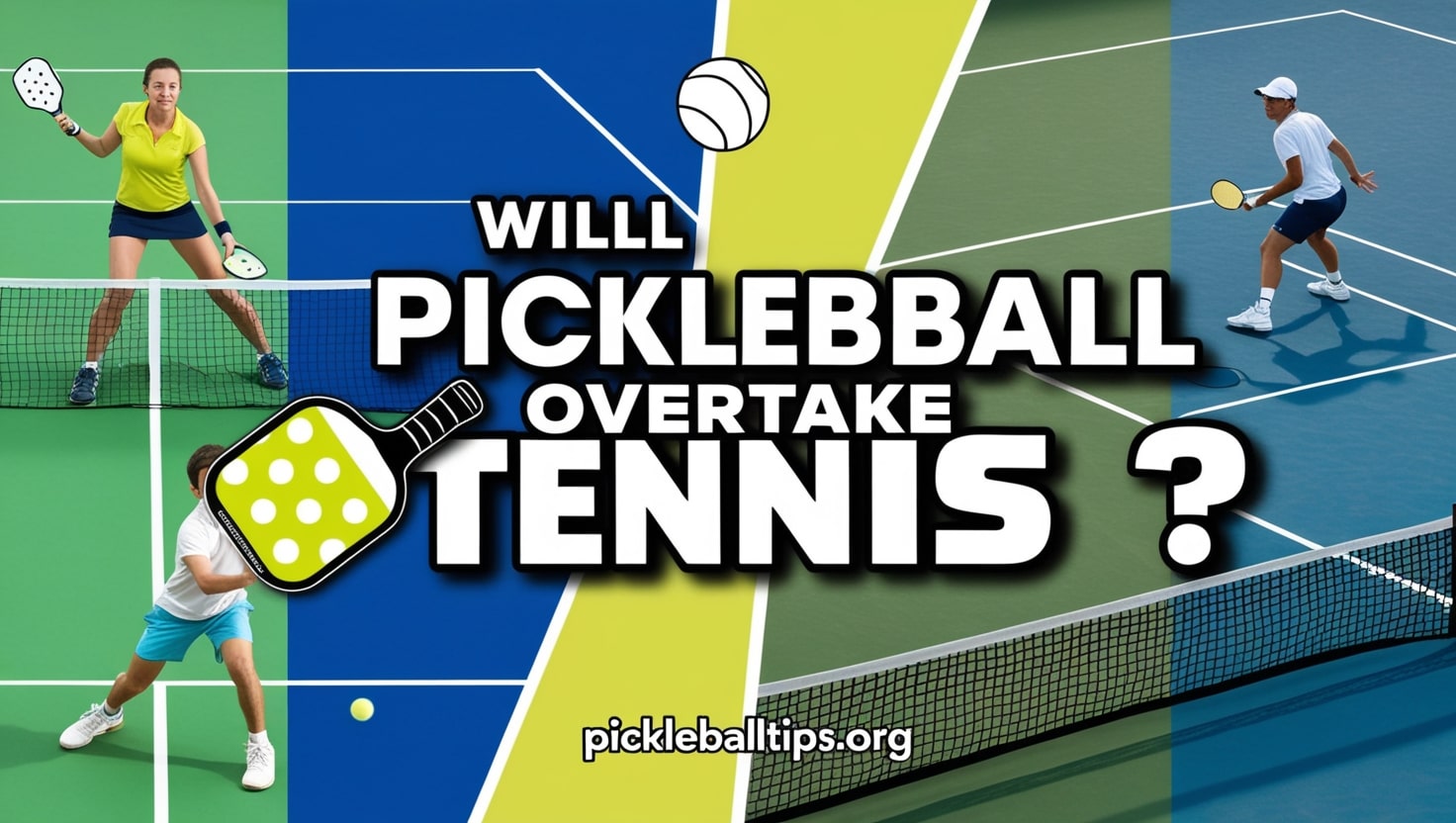Pickleball has emerged as one of the fastest-growing sports worldwide, with its roots deeply planted in casual backyard games and competitive leagues. On the other hand, tennis, a sport steeped in history, has long held a dominant position in racquet sports. The question now circulating among sports enthusiasts and experts is, “Will pickleball overtake tennis?” This article delves into the nuances of both sports, analyzing trends, popularity, accessibility, and future projections to answer this intriguing query.
The Rise of Pickleball

Pickleball was invented in 1965, blending elements of tennis, badminton, and ping-pong. Over the years, the game gained traction in North America, becoming a favorite among retirees due to its accessibility and relatively low physical strain. However, in recent years, its appeal has transcended age demographics, captivating younger audiences and professional athletes alike.
Growth Statistics
- Participation Growth: According to the Sports & Fitness Industry Association (SFIA), pickleball participation in the U.S. grew by nearly 40% in 2022, reaching over 4.8 million players.
- Global Expansion: While initially a North American phenomenon, pickleball is now making waves internationally, with dedicated courts being constructed across Europe and Asia.
- Celebrity Endorsements: High-profile figures such as LeBron James and Bill Gates have promoted pickleball, drawing more attention to the sport.
These trends signify a shift in recreational sports, with pickleball rising as a contender in the global sports arena.
Tennis: The Established Giant
Tennis has been a staple in the world of sports for centuries. With iconic tournaments like Wimbledon, the French Open, and the U.S. Open, tennis commands a global audience and generates billions in revenue annually.
Historical Legacy
- Grand Slam Events: Tennis boasts four prestigious Grand Slam tournaments, showcasing the finest athletes in the sport.
- Global Appeal: Tennis is played and followed in nearly every corner of the world, from affluent clubs to public courts.
- Cultural Impact: Legendary players such as Serena Williams, Roger Federer, and Rafael Nadal have not only dominated courts but also inspired millions.
The sport’s deep-rooted tradition and international reach make it a formidable competitor for any emerging sport, including pickleball.
Key Differences Between Pickleball and Tennis
To understand whether pickleball can overtake tennis, it’s essential to compare the two sports in terms of their fundamental characteristics:
| Aspect | Pickleball | Tennis |
| Court Size | Smaller, about a third of a tennis court | Larger, requiring more movement |
| Equipment | Lightweight paddles and plastic balls | Heavier racquets and felt-covered balls |
| Physical Intensity | Lower; less running required | Higher; more demanding on the body |
| Accessibility | Easier to learn for beginners | Requires more skill to start |
| Player Demographics | Popular among all ages, especially seniors | Traditionally popular among younger and middle-aged audiences |
These differences highlight pickleball’s inclusive nature and accessibility compared to tennis’s physically demanding gameplay.
Why Pickleball Could Overtake Tennis
Several factors indicate that pickleball might eclipse tennis in popularity:
1. Accessibility
Pickleball’s smaller courts and simpler rules make it more accessible to beginners and casual players. Unlike tennis, which requires extensive practice to master basic techniques, pickleball allows players to enjoy the game almost immediately.
2. Lower Costs
Building and maintaining pickleball courts is significantly cheaper than tennis courts. Additionally, equipment costs are lower, making the sport more appealing to schools, community centers, and public parks.
3. Social Nature
Pickleball is inherently social, often played in doubles format and promoting interaction among players. This aspect aligns with modern trends prioritizing community and connection in recreational activities.
4. Adaptability
Pickleball can be played indoors or outdoors, making it a year-round activity. Its flexibility contributes to its increasing popularity in diverse climates and locations.
5. Demographic Shifts
The growing senior population has fueled pickleball’s rise, but younger generations are also embracing the sport for its fun, fast-paced nature. The inclusivity across ages gives pickleball a broad appeal.
Challenges Facing Pickleball
Despite its rapid growth, pickleball faces hurdles that could hinder its potential to overtake tennis:
- Limited Professional Infrastructure: While leagues and tournaments are growing, pickleball’s professional scene is nowhere near the level of tennis’s well-established ecosystem.
- Global Reach: Tennis’s presence in countries worldwide far surpasses pickleball’s current footprint. Expanding internationally will be crucial for pickleball’s growth.
- Perception Issues: Some traditionalists view pickleball as a “simpler” or “less serious” sport compared to tennis, affecting its reputation among purists.
Will Pickleball Take Over Tennis?
The answer lies in the context of what “taking over” means. If overtaking implies more casual participation, pickleball may indeed surpass tennis due to its accessibility, affordability, and adaptability. However, in terms of global viewership, professional competition, and historical significance, tennis is unlikely to be dethroned anytime soon.
Pickleball’s growth and tennis’s legacy can coexist, appealing to different audiences and needs. Sports are not a zero-sum game—both can thrive in their unique spaces.
Conclusion
In the evolving world of sports, pickleball’s meteoric rise has sparked a fascinating debate about its potential to overtake tennis. While the future remains uncertain, one thing is clear: pickleball is here to stay, carving its niche as a beloved activity for millions.
Thank you for reading this in-depth analysis on pickleballtips.org. Whether you’re a tennis fan, a pickleball enthusiast, or simply curious about t
